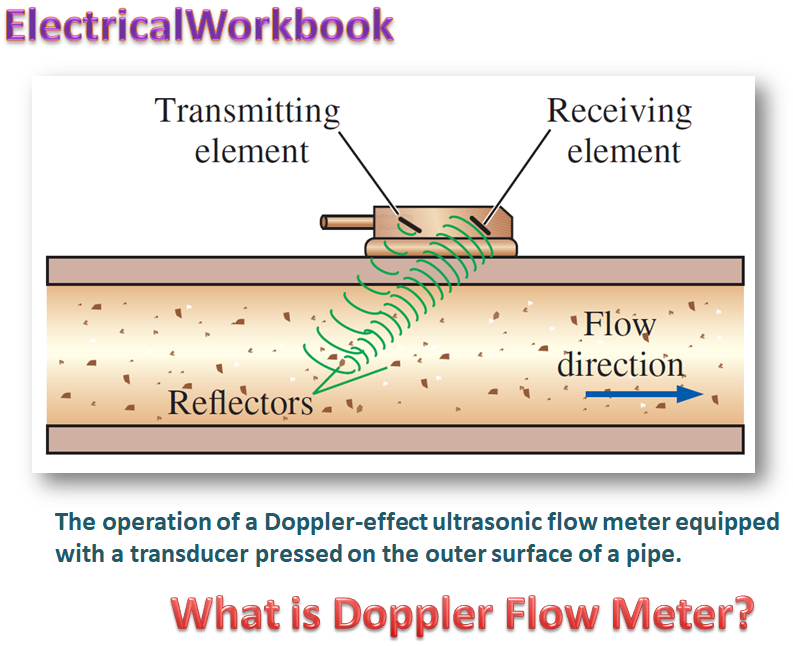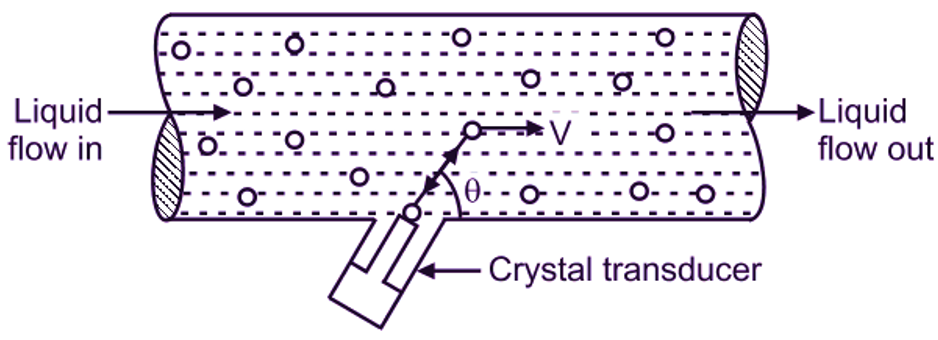
Doppler flow meter works on the principle of doppler frequency shift. It works on the principle, which states that, “particles suspended in the fluid impart a frequency shift proportional to the particle velocity, which can be measured with a suitable electronic counter.
Construction and Working of Doppler Ultrasonic Flow Meter
Fg. 1 shows construction of Doppler flow meter, in which, one crystal transducer is mounted outside the pipe. This transducer emits an ultrasonic wave and the wave is projected at an angle through the pipe wall into the liquid. The transducer is basically piezoelectric crystal with a heavy backing to reduce the effect of unwanted rear movement.

Fig. 1: Doppler Ultrasonic Flow meter
Some part of the ultrasonic wave is reflected back by bubbles present in the liquid and liquid particles. This reflected part of ultrasonic wave is returned towards the transducer through the pipe wall. Since the reflector (bubbles) is travelling at the fluid velocity, the frequency of the reflected wave is shifted according to doppler principle. Velocity of fluid is given by,
\[\text{V}=\frac{{{\text{V}}_{\text{S}}}\cdot \Delta \text{f}}{2{{\text{f}}_{\text{o}}}\cdot \cos \text{ }\!\!\theta\!\!\text{ }}=\Delta \text{f}\cdot \text{K}\]
where, VS = Velocity of sound in m/sec.
Δf = Difference between transmitted and received frequency
fo = Frequency of transmission
θ = Angle of transmitter and receiver crystal with respect to axis of pipe in degrees
K = VS / (2fo cosθ)
Advantages of Doppler Ultrasonic Flow Meter
- No obstruction to flow.
- It is not sensitive to variations in viscosity, temperature, density etc.
- No moving parts, so less or even no wear.
- Life is more.
- Excellent dynamic response.
Disadvantages of Doppler Ultrasonic Flow Meter
- High cost.
- Complex circuit.
Application of Doppler Ultrasonic Flow Meter
- It is used mainly for flow measurement of liquids without any pressure loss.